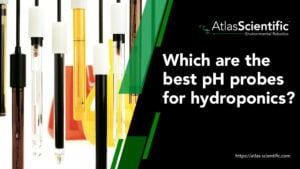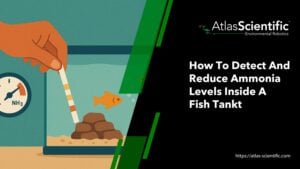

Best pH Probes For Hydroponics in 2025 – A Complete Buying Guide
Finding the best pH probe for hydroponics can make or break your growing success. In hydroponics, maintaining the correct pH is essential because it directly
# Type at least 1 character to search # Hit enter to search or ESC to close

No products in the cart.

No products in the cart.
Product Categories

Aquaculture has numerous advantages, including meeting rising global seafood demand, relieving pressures on wild fish stocks, generating employment opportunities, increasing food security, promoting sustainability, and potentially offsetting traditional fishing method’s environmental challenges.
Seafood consumption is growing globally. According to the Seafood–Global Market Trajectory & Analytics 2022 report, the seafood market worldwide will grow from $116.8bn in 2022 to $134bn by 2026 at a compounded annual growth rate (CAGR) of 2.9% over this period.
China and India have historically been major consumers of seafood; however, rising per capita fish consumption across these countries as well as many other Asian nations in east, south and southeast Asia are increasing overall seafood volumes according to the report. Developing nations are expected to account for more than four-fifths of global new seafood consumption by 2030.
This trend raises questions about what it means for global seafood production, especially since various regions have challenges such as ecosystem stressors, habitat degradation issues, and illegal fishing plus overfishing. To address these challenges, aquaculture operations are increasingly turning to advanced monitoring and testing solutions, such as those provided by Atlas Scientific, to ensure optimal water quality and production efficiency.
Aquaculture refers to the cultivation and harvesting of aquatic animals or plants in controlled water environments such as lakes, oceans, rivers, streams, and ponds. It is involved in many different activities including the provision of food production, restoration of endangered species, enhancement of natural populations, establishment of aquariums, or revival of fish habitats.
Mariculture: This form of aquaculture utilizes seawater either directly from the ocean or contained within ponds for breeding marine organisms. These include mollusks, prawns, shellfish, and seaweed used for various purposes, including collagen extraction for cosmetics or pearl production for jewelry. Maintaining proper water parameters is crucial in mariculture, which is where Atlas Scientific’s marine-grade pH sensors and conductivity probes come into play.

Fish farming: Representing a major portion of aquaculture, fish farming involves breeding fish in either freshwater or seawater for human consumption. This method is highly applicable in some parts of the world as it provides a critical source of protein. Atlas Scientific’s dissolved oxygen sensors are essential for monitoring fish oxygen levels.
Algaculture: This involves the cultivation of algae, which are microorganisms with characteristics of both plants and animals. Some companies, such as Exxon Mobil, are exploring their potential use for energy sources through large-scale growth.
Integrated Multi-Trophic Aquaculture (IMTA): This approach integrates several trophic levels within an ecosystem, mimicking natural ecological systems. Recycling nutrients and waste utilization enhances overall productivity by optimizing resource efficiency and reducing waste levels. We offer a range of sensors, including ORP probes to monitor and maintain the delicate balance in IMTA systems.
Inland pond culture: This method focuses on freshwater fish farming using artificial ponds, common in China and the U.S.A. Aeration systems are used to maintain oxygen levels and prevent ice formation, enabling year-round production. Our dissolved oxygen sensors and temperature probes are crucial for monitoring these parameters in inland pond cultures.

Recirculating systems: These systems keep fish enclosed within chambers whose water is treated and then recirculated to provide favorable conditions. They are environmentally friendly and efficient because they minimize the amount of water used while ensuring responsible handling of waste. Atlas Scientific’s full range of reliable water quality sensors, including pH sensors, conductivity, and dissolved oxygen probes, are essential for maintaining optimal conditions in recirculating systems.
Open-Net Pen and Cage Systems: Mesh cages are used to confine fish in open-net pen and cage systems located offshore or in inland freshwater areas.
Flow-through systems: These are long units where fish are stocked, fed upon, and then waste is collected downstream. They serve well in trout farming where there should be good water flow rates without wastefulness. Atlas Scientific’s flow meters and water quality sensors can help optimize these systems for maximum efficiency.
Aquaculture produced 122.6 million tons of fish, shrimps, shellfish, and seaweed in 2020. Some of this production has environmental benefits that come with certain farming techniques or areas. In particular, the bioremediation advantages of growing seaweed and shellfish in coastal waters involve soaking up excess nutrients from urban/agricultural runoff, hence reducing potential harm to indigenous organisms as a result of algal bloom toxicity.

Additionally, aquaculture may help protect entire habitats or conserve certain populations/species directly or indirectly. Fishery exclusion zones around commercial farms act as partial marine protected areas, safeguarding fishes and other marine species that inhabit or congregate in and around these sites.
Apart from tasting nice, seafood has numerous health gains; it’s a nutrient-dense food, which is associated with a lower risk of cardiac diseases. Omega-3 fatty acids are found in shellfish and fish such as salmon, tuna, and trout, which are essential for healthy hearts and brains.
Since omega-3s cannot be produced by our bodies, we must source them from the foods that we eat. Aquaculture’s expansion of seafood production enables more people to afford nutritious seafood, thereby improving general health.
To ensure the quality and safety of aquaculture-produced seafood, rigorous water quality monitoring is essential. Atlas Scientific’s range of sensors, including pH, conductivity, and dissolved oxygen probes, help aquaculture operations maintain optimal conditions for healthy fish growth.
The planet’s ocean means that Earth is covered by 70% of water, yet only 2% is contributed to human foods. But luckily, there are also ecologically sustainable fish farms that meet constantly increasing global demands.
As health experts say, eating fish offers a great deal of nutritious value to disadvantaged groups, thereby enhancing nutritional status and food security all over the world.

The use of advanced monitoring technologies, such as those provided by Atlas Scientific, helps ensure that aquaculture operations can meet these growing demands sustainably and efficiently.
Oysters, clams, and mussels are not just what we eat while having a beach barbecue; they are important components of waterways. However, some places have suffered drastically decreased populations of these shellfish. Preserving shellfish beds allows them to filter water during feeding, thereby providing homes for small creatures as well as preventing shore erosion due to strong waves.
Preserving ecosystems protects biodiversity, hence fostering sustainable development; besides, it helps reverse land degradation. At Atlas Scientific, our aquaculture water quality sensors can help monitor the health of these shellfish beds, ensuring optimal conditions for their growth and ecological function.
Conservationists increasingly use aquaculture methods for species restoration and protection apart from food production. The leading non-governmental organization involved in conserving the planet, The Nature Conservancy (TNC), has always been at the forefront of using aquaculture to restore marine ecosystems.

For example, TNC applies aquaculture as a key tool to restore degrading shellfish reefs by cultivating oysters and mussels that can be transplanted back to the reef to begin restoration. Shellfish-rich reefs offer significant ecological benefits, serving as vital habitats and enhancing water quality along coastal areas. In this regard, the relevance of aquaculture is beyond question since it provides individuals who are rarely available in nature for relocation.
The reintroduction of cultured farmed fish into their natural habitats is a global use of aquaculture to assist with restoration efforts for threatened or endangered fish populations.
Today, over 90% of these freshwater aquarium species are bred within captivity so that pet owners do not have to put extra pressure on vulnerable wild stocks when putting together an aquarium. However, there remain some aspects where marine species such as clownfish and corals continue to be collected from the wild. The world is facing challenges to develop new methods for raising these species through aquaculture, thereby reducing stress on natural stocks.
Sustainable aquaculture farming methods prioritize both food production and environmental conservation. The use of cutting-edge technology, exemplified by tools such as the OceanReports mapping system, that assesses “ocean neighborhoods” for decision-making purposes has enhanced sustainable aquaculture prospects while reducing environmental risks. It provides in-depth details about habitats, species, existing industries, and potential hazards like undersea cables or shipwrecks.

In addition to mapping tools, the integration of advanced water quality monitoring systems has revolutionized sustainable aquaculture practices. These systems allow for real-time monitoring of critical water parameters, ensuring optimal conditions for aquatic life while minimizing environmental impact.
Sensors in aquaculture systems provide real-time data on water quality parameters, allowing for quick detection of issues, enabling you to act quickly to maintain optimal conditions, prevent disease outbreaks, and ensure healthy fish growth, ultimately improving productivity and sustainability.
These sensors help maintain optimal pH levels for different aquatic species, ensuring their health and growth.

Conductivity probes measure the salinity and overall mineral content of water, which is crucial for both freshwater and marine aquaculture.

These sensors monitor oxygen levels in water, which is vital for the survival and health of aquatic organisms.

Temperature probes measure the temperature of water by measuring the electrical signal. By measuring the temperature in aquaculture systems, you can maintain optimal water temperatures for different species.

These sensors measure water quality and can indicate the presence of contaminants.

These sensors monitor ammonia levels, which can be toxic to aquatic life if too high.
By integrating these advanced sensors and monitoring systems, you can:
Aquaculture, the farming of aquatic organisms, can meet global seafood demand while reducing pressure on wild stocks. It supports sustainability, economies, and food security. Various techniques exist, including fish farming and integrated systems. Technological advances are making aquaculture more sustainable, positioning it as a key solution to global challenges.

Providing accurate, real-time data on critical water parameters, enables aquaculture operations to optimize their production while minimizing their environmental impact.
Do you have a question about aquaculture or what aquatic testing kits we offer? Do not hesitate to contact the world-class team at Atlas Scientific.
















Finding the best pH probe for hydroponics can make or break your growing success. In hydroponics, maintaining the correct pH is essential because it directly

The fastest way to reduce ammonia levels in a fish tank is to perform partial water changes, temporarily stop feeding fish, use chemical filtration, increase